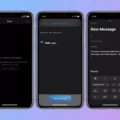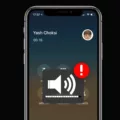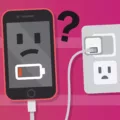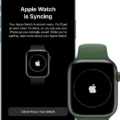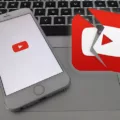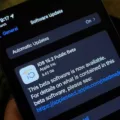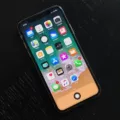With the release of iOS 15, many iPhone users have reported experiencing issues with YouTube. These problems can range from videos not playing properly to slow network speeds or frequent disconnections. If you’re facing similar issues, don’t worry, as there are several troubleshooting tips and fixes you can try to resolve these problems.
1. Restart or Reboot Your iPhone: A simple restart or reboot can often solve minor software glitches. To do this, drag the slider to turn off your iPhone. Then, press and hold the right side button until the Apple logo appears to turn it back on.
2. Update YouTube App: Ensure that you have the latest version of the YouTube app installed on your iPhone. Open the App Store, go to the Updates tab, and check if there’s an update available for YouTube. Install the update if available.
3. Update iOS: Keeping your iPhone’s operating system up to date is crucial for optimal performance. Check if there’s an iOS update available by going to Settings > General > Software Update. If an update is available, download and install it.
4. Check Wi-Fi Connectivity: If you’re experiencing slow network speeds or frequent disconnects, it could be an issue with your Wi-Fi connection. Try restarting your Wi-Fi router or connecting to a different network to see if the problem persists.
5. Clear YouTube Cache: Over time, the cache accumulated by the YouTube app can cause performance issues. To clear the cache, open the YouTube app, go to Settings > Clear Search History > Clear Watch History > Clear Cache.
6. Disable Background App Refresh: Background app refresh can consume network resources and affect YouTube’s performance. Disable this feature by going to Settings > General > Background App Refresh and toggle it off for YouTube.
7. Reset Network Settings: Resetting your network settings can fix connectivity issues. Go to Settings > General > Reset > Reset Network Settings. Note that this will remove all saved Wi-Fi passwords, so make sure you have them handy.
8. Contact YouTube Support: If none of the above solutions work, it’s worth reaching out to YouTube support for further assistance. They may be able to provide specific troubleshooting steps or identify any known issues with the app.
Remember, it’s always a good idea to wait for any initial bugs or glitches to be ironed out before updating to the latest iOS version. However, if you’re already experiencing YouTube problems after updating to iOS 15, these troubleshooting tips should help you get back to enjoying your favorite videos.
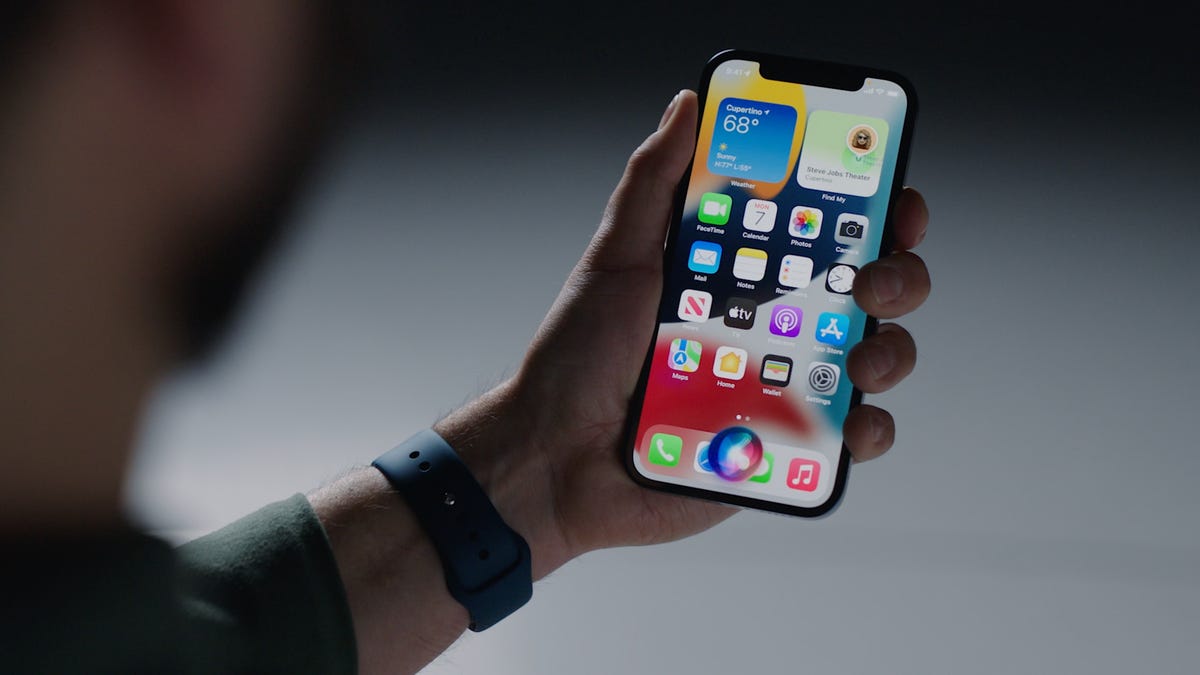
Why YouTube is Not Working Properly On iPhone?
There could be several reasons why YouTube is not working properly on your iPhone. Here are some possible causes:
1. Poor internet connection: YouTube requires a stable and fast internet connection to stream videos smoothly. If your iPhone is connected to a weak or unstable Wi-Fi network or if you have a slow cellular data connection, it can affect the playback of videos on YouTube.
2. Outdated YouTube app: If you haven’t updated the YouTube app on your iPhone for a long time, it may not be compatible with the latest iOS version or may have bugs that can cause playback issues. Updating the YouTube app to the latest version from the App Store can often resolve such problems.
3. Software glitches: Sometimes, software glitches or conflicts can occur on your iPhone, which can affect the performance of apps, including YouTube. Restarting your iPhone can help resolve temporary glitches and restore normal functionality.
4. Insufficient storage space: If your iPhone is running low on storage space, it can impact the performance of apps, including YouTube. Clearing some space by deleting unnecessary files or apps can help improve the performance.
5. Incompatible iOS version: If you are using an older iPhone model and have updated to the latest iOS version, it is possible that the YouTube app is not fully optimized for your device. In such cases, you may experience playback issues or other problems. You can try downgrading to a previous iOS version or contacting YouTube support for assistance.
6. YouTube server issues: At times, YouTube may experience server-side issues that can affect video playback on all devices, including iPhones. These issues are usually temporary and get resolved by YouTube’s technical team.
To troubleshoot the problem, you can try the following steps:
1. Check your internet connection: Make sure you have a stable and fast internet connection. You can try switching to a different Wi-Fi network or contacting your service provider for assistance.
2. Update the YouTube app: Open the App Store, go to the Updates tab, and check if there is an update available for the YouTube app. If yes, update the app to the latest version.
3. Restart your iPhone: Press and hold the right side button of your iPhone until the slider appears. Drag the slider to turn off your iPhone. After a few seconds, press and hold the right side button again until the Apple logo appears.
4. Clear storage space: Go to the Settings app on your iPhone, select General, then iPhone Storage. Here, you can see how much space is available on your device and delete unnecessary files or apps to free up space.
If none of these steps resolve the issue, you may need to contact YouTube support or visit an Apple Store for further assistance.
Are There Problems With iOS 15 iPhone?
There have been reports of various issues with iOS 15 on iPhones. Some common problems include:
1. Wi-Fi connectivity issues: Many users have experienced slow network speeds or frequent disconnections when using Wi-Fi on their iOS 15 devices.
2. Battery drain: Some users have noticed that their iPhone’s battery drains faster than usual after updating to iOS 15.
3. App compatibility issues: Certain apps may not work properly or crash frequently after the iOS 15 update.
4. Performance issues: Some users have reported that their iPhone’s performance has become sluggish or laggy after installing iOS 15.
5. Bluetooth problems: Users have reported difficulties in connecting their iPhones to Bluetooth devices or experiencing intermittent connection drops.
6. Screen freezing or unresponsive touch: Some iPhone users have encountered issues where their screen becomes unresponsive or freezes intermittently.
7. Random reboots: A small number of users have experienced unexpected device reboots after updating to iOS 15.
To address these problems, you can try the following troubleshooting steps:
1. Restart your iPhone: Sometimes, a simple restart can resolve minor software glitches.
2. Update apps: Make sure all your apps are up to date, as developers often release updates to address compatibility issues with new iOS versions.
3. Reset network settings: Go to Settings > General > Reset > Reset Network Settings. This will reset your network settings, including Wi-Fi passwords, so make sure you have them handy.
4. Reset all settings: If the problem persists, you can try resetting all settings on your iPhone by going to Settings > General > Reset > Reset All Settings. This will not delete any data but will revert all settings back to their default state.
5. Contact Apple Support: If none of the above steps work, it’s recommended to reach out to Apple Support for further assistance. They can provide more specific troubleshooting steps or advise if a software update is required.
Remember, it’s always a good idea to back up your iPhone before performing any troubleshooting steps or software updates to ensure your data is safe.
What Are The Problems With The iOS 15 Update?
The iOS 15 update has encountered several issues since its release. These problems mainly revolve around battery drain, app crashes, Wi-Fi and Bluetooth connection issues, and other miscellaneous glitches. It is advisable to exercise caution and wait for these issues to be resolved before proceeding with the installation. Here is a breakdown of the problems commonly reported:
1. Battery Drain: Many users have reported a significant decrease in battery life after updating to iOS 15. This issue can be frustrating as it leads to more frequent charging and limits the device’s usage.
2. App Crashes: Some users have experienced frequent app crashes or freezing after updating to iOS 15. This can disrupt productivity and cause frustration, especially when using crucial applications.
3. Wi-Fi and Bluetooth Connection Issues: Users have reported problems with their Wi-Fi and Bluetooth connections after installing iOS 15. This includes difficulties connecting to networks, slow speeds, or intermittent connectivity. These issues can hinder the seamless functioning of various online services and devices.
4. Miscellaneous Glitches: In addition to the aforementioned problems, users have encountered various other glitches after updating to iOS 15. These may include issues with notifications, display problems, unresponsive touch screens, and other unexpected behaviors.
It is important to note that not all users will experience these problems, and the severity can vary. Apple typically addresses these issues through subsequent software updates. Therefore, it is advisable to wait for these updates and ensure a smoother experience before updating to iOS 15.
How Do You Fix iOS 15 Glitch?
To fix glitches or performance issues on iOS 15, you can try the following steps:
1. Restart Your Phone: This simple step can often resolve minor software glitches. Press and hold the power button, then slide to power off. Wait a few seconds, then press and hold the power button again until the Apple logo appears.
2. Update Your iPhone: Apple regularly releases software updates to address bugs and improve performance. Make sure you have the latest version of iOS 15 installed. Go to Settings > General > Software Update to check for updates and install if available.
3. Update Your Apps: Developers often release updates to their apps to ensure compatibility with the latest iOS version. Open the App Store, go to the “Updates” tab, and update all your apps.
4. Cleanup Your iPhone’s Storage: A lack of storage space can cause performance issues. Delete unnecessary apps, photos, videos, and other files to free up space. You can also enable the “Offload Unused Apps” option in Settings > General > iPhone Storage, which removes apps you rarely use but keeps their data intact.
5. Stop Using Background App Refresh: Disabling this feature can help improve performance and save battery life. Go to Settings > General > Background App Refresh, and either disable it entirely or select specific apps to allow background refresh for.
6. Reset All Settings: This option resets all your iPhone’s settings to their default values without deleting your data. It can help resolve persistent glitches. Go to Settings > General > Reset > Reset All Settings.
7. Downgrade iOS: If the issues persist and you suspect they are related to iOS 15, you can downgrade to a previous iOS version if Apple is still signing it. However, note that this process erases all your data, so make sure to backup your iPhone first.
8. Restore: If all else fails, you can restore your iPhone to factory settings using iTunes or Finder on a computer. This erases all content and settings, so ensure you have a recent backup. Connect your iPhone to the computer, select it in iTunes or Finder, and choose the “Restore iPhone” option.
Remember, if the glitches persist or are severe, it may be best to contact Apple Support or visit an Apple Store for further assistance.
Conclusion
IOS 15 has brought about some reported issues with YouTube playback on iPhones. Users have experienced problems such as videos not playing properly, slow network speeds, and frequent disconnects. While some of these issues can be resolved by restarting the iPhone or updating the software and apps, there may still be underlying bugs in iOS 15 that need to be addressed by Apple. It is advisable to wait for any potential updates or fixes before installing the latest version of iOS to avoid encountering these problems. Additionally, performing regular maintenance on your iPhone, such as cleaning up storage and disabling background app refresh, can help optimize its performance. If all else fails, downgrading iOS or restoring the device may be necessary. It is important to stay informed about any potential troubleshooting steps or solutions provided by Apple or the YouTube app developers to address these issues effectively.

